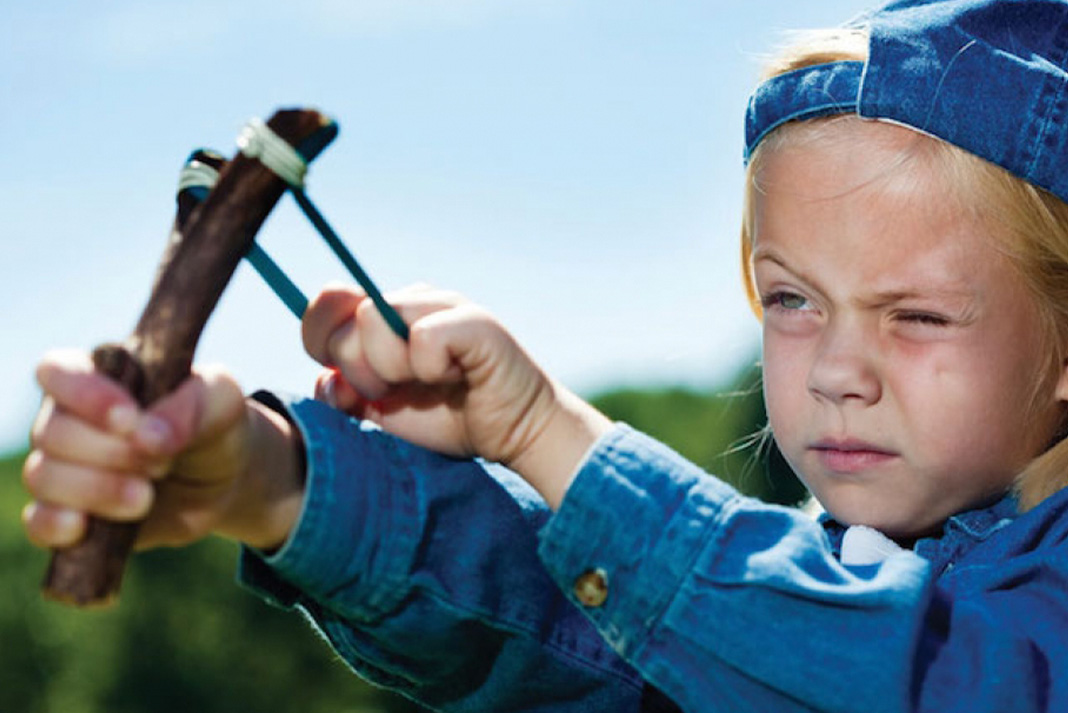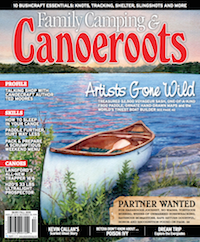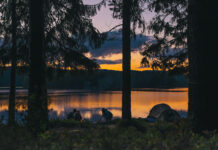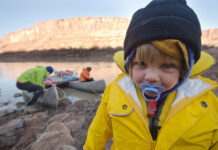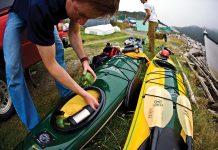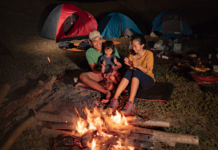TRAVEL LIKE BIGFOOT
When you travel in the backcountry, you’re a visitor. Just like when you visit a friend’s house, you don’t throw your garbage in their yard, carve your name in their furniture or put soap in the drinking water. Those same courtesies apply when you’re outside. Hiking and camping without a trace are signs of an expert outdoors person, according to Jason Grubb, program director at the Leave No Trace Center for Outdoor Ethics in Boulder, Colorado. The principles of
Leave No Trace wilderness travel teach us how to limit the combined effects of millions of outdoor visitors. “By being aware of how feeding wildlife habituates them to humans, how irresponsible campfire use can destroy entire forests, and how to properly dig a cat hole when nature calls, we protect the environment and increase our own skills and knowledge,” Grubb says. Find four more principles to leaving no trace at lnt.org.
ONE KNOT TO RULE THEM ALL
“One of the most useful knots in any camper’s arsenal is the mighty bowline. It’s quick, versatile and reliable,” says Black Owl Outdoors’ instructor Anthony Beaston (blackowloutdoors.com). “Use it when you need a fixed loop in the end of a line that is capable of holding weight or when you need to secure something to a stationary object. A properly tired bowline is easy to untie even after being tightened under load.” A quick way to remember how to tie the bowline is the rabbit-in-a-hole story. Form a small loop near the end of your line. Pass the running end through the loop from underneath (the rabbit comes out of the hole). Next wrap the line around the standing line and back down through the loop (the rabbit goes around the tree and back down the hole). Finally, tighten the knot by pulling on the free end while holding the standing line.

IDENTIFY POISON IVY
Leaves of three, let it be. Learn all about poison ivy from Canoeroots here.
EASIEST DIY FIRE STARTER EVER
“Cotton balls are my favorite. They’re lightweight and when Vaseline or petroleum jelly is worked into the ball, it’s highly flammable. I’ve even dipped them in paraffin wax and melted Vaseline and stored them in my pack in a Ziploc bag.” —Happy Camper Kevin Callan
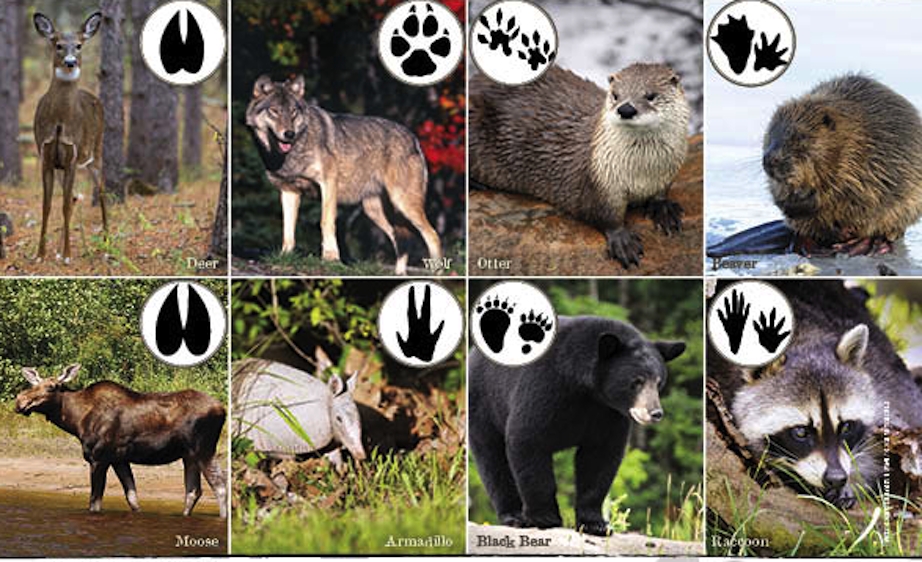
RECOGNIZE COMMON ANIMAL TRACKS
Man-made trails through forests and by riversides are walkways for all sorts of wild animals. Stop mistaking dog tracks for wolves and moose tracks for deer with the tips below.
DEER: Deer tracks, shaped like upside down hearts, are about three inches long and are often found on hiking trails. A doe’s back hooves usually fall on top of her front hooves or slightly outside of them. A buck has a wider chest than hindquarters, making his rear tracks fall to the inside. his rear tracks won’t reach the front ones.
WOLF: Many a camper has had their heart race when they found a wolf track, only to meet up with a dog further along the trail. Mature wolves have larger paws than pets; more than four inches long. Their front paws are larger than their rear, and elongated middle toes help distinguish their tracks from the rounder track of your furry best friend.
MAKE A SLINGSHOT
“There are only two rules: always know what is behind your target and never aim your slingshot— loaded or not—at a person, an animal or anything expensive and fragile. All you’ll need is a forked stick, eight to 12 inches from top to bottom, and latex tubing. Notch both top ends of the Y and tie your latex in place. Aim to make the tubing the same length as the distance between the child’s wrist and elbow. Make sure to keep thumbs out of the path of projectiles.” —Dave Quinn, Outdoor Educator
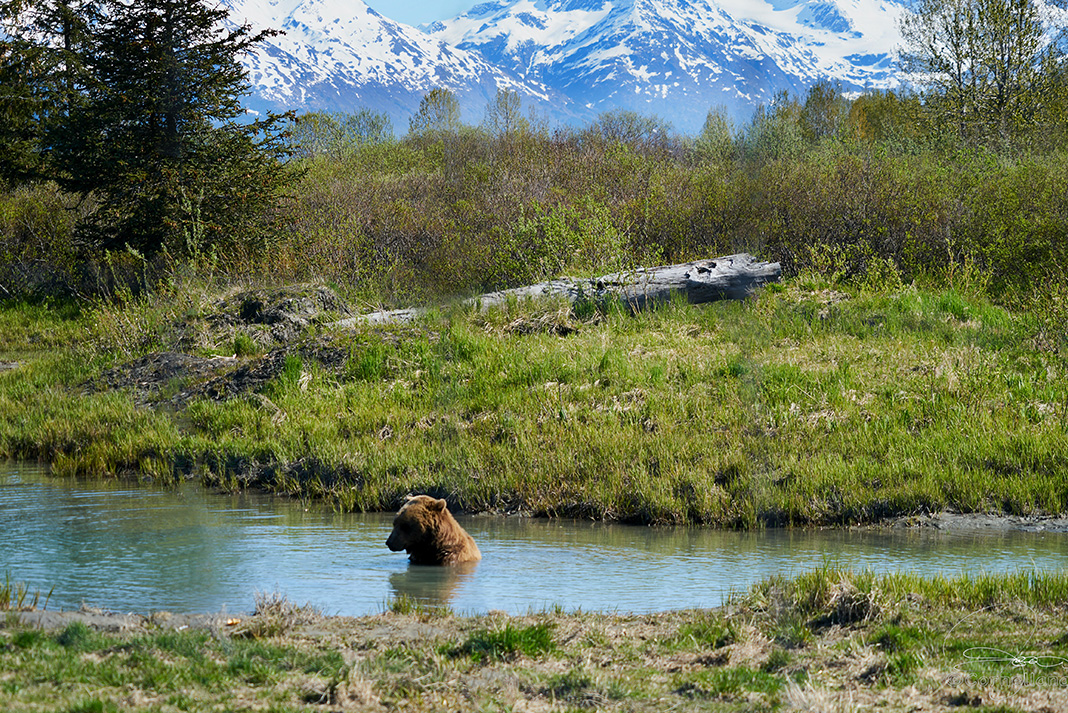
BE BEAR AWARE
The best defense against a bear encounter is keeping a clean campsite and not giving a bruin a reason to get interested in the first place. Still, it helps to learn the basics of bear behavior so you can recognize the difference between a defensive attack versus a predacious attack.
“A typical defensive bear makes a lot of noise—it’ll huff and swat the ground. The bears that are going to get you in serious trouble a r e the bears that follow you and don’t make noise,” says world- renowned bear ecologist and retired University of Calgary professor, Stephen Herrero. He adds that bear attacks are incredibly rare. “That there are 800,000 black bears in North America and so few attacks is really a testament to how benign they are.”
SURVIVE GETTING LOST
If you become lost, the U.S. National Forest Service recommends using the simple Boy Scout prompt: STOP. As soon as you realize you may be lost, stop, stay calm and stay put. Think through the situation—how did you get here? Observe your environment—which landmarks should you see? Don’t take a step until you have a good reason. “Based on your thinking and observations, come up with some possible plans, think them through, then act on one of them. If you are not very, very confident in the route, then it’s always better to stay put,” the organization recommends. Signaling devices, such as a whistle and mirror, will aid rescuers. Learn more at fs.fed.us.
DIY SHELTER
A well-insulated shelter should be your top priority in a survival situation, but building one can also be a fun learning activity. Man’s number one survival threat is the weather. A good shelter in cool weather provides insulation, wind block and sheds moisture.
Build a simple A-frame structure using a fallen tree resting at an angle and dead wood. Place large limbs against the sides of the tree first, followed by smaller branches. Then cover the en- tire structure with leaves and forest debris. Utilize local vegetation, such as evergreen boughs, dry pine needles and dry leaves to create a bed eight to 10 inches thick. Once inside, the front entrance should be plugged with more leaves and debris. A shelter like this will help to contain precious body heat and keep the elements at bay.” —Survival Instructor Creek Stewart (willowhavenoutdoor.com)
This article first appeared in the Fall 2015 issue of Canoeroots Magazine.
Subscribe to Paddling Magazine and get 25 years of digital magazine archives including our legacy titles: Rapid, Adventure Kayak and Canoeroots.



